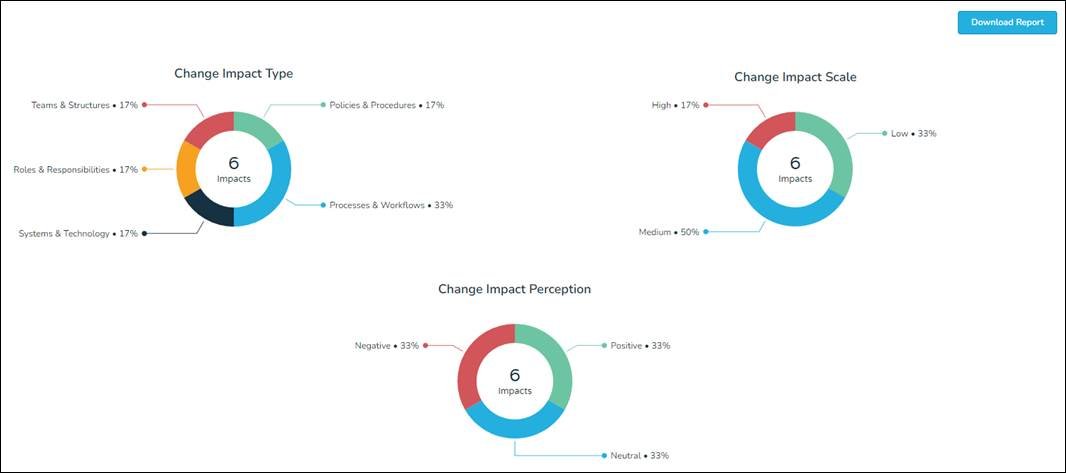Digitizing Change Management
Raise your hand if you’ve ever worked really hard to capture change impacts in a data-filled Excel spreadsheet only to come back later to discover that a team member accidentally deleted something or made well-intended changes—resulting in a loss of information and effort! *Every Organizational Change Management (OCM) practitioner raises a hand*. Most change management consultants have their tried-and-true tools—usually in the form of an Excel spreadsheet, Word document, or PPT presentation—to capture key activities such as Stakeholder Assessment or Impact Assessment. This process is often time-consuming and detailed—and prone to human error!—yet is a necessary step for OCMers to understand and prepare stakeholders for the change ahead. However, what if some of the tedious components of capturing and manipulating stakeholder and impact data could be automated…change management practitioners could have more time to focus on what really matters…leading change! We sat down with Eddi Trevizo, CXO of ChangeSync, to learn how her company is digitizing key components of the change management process so that practitioners can more effectively and efficiently lead change.
Why not digitize change management?
Companies are digitizing medical records, accounting data, and financial information, so why not make change management data digital as well? Who will be impacted by the change, captured in the Stakeholder Assessment, and how they will be impacted, captured in the Impact Assessment, are foundational to the creation of a Change Management Strategy. While a common way for change management consultants to capture such OCM data is in a formula-filled Excel spreadsheet, you can’t put a data-filled spreadsheet in front of leaders or other stakeholders (without seeing eyes glaze over). As a result, OCMers have to manually create a “pretty” PowerPoint presentation from this spreadsheet data to effectively share the information with others. “Do we want this in a circle graph, or do we want this in a bar graph? How do we want to categorize the data?” Manual manipulation and reporting of change data requires a lot of work and a lot of mental gymnastics too! This wouldn’t be so onerous if it was a one-time assignment; however, it is VERY likely that project changes will occur which require ongoing manual updates to the data in Excel and PowerPoint. Companies like ChangeSync are making this process more efficient by capturing OCM data and automating the output. As change management practitioners enter OCM related data into the ChangeSync tool, such as Stakeholder and Impact Assessments, reporting and visual-representations of the data are created—INSTANTANEOUSLY! OCMers can then customize the output of the data based on the audience or objective. ChangeSync’s tool also removes some of the human error component or re-work that can occur when multiple people are working from a single document. For an OCMer that’s managing a major project or several projects, decreasing manual work and minimizing room for human error are major wins.
ChangeSync Change Impacts Report: This tool shows your project-specific or enterprise-wide change impacts by type, scale, and perception.
All science or still art?
There’s an art and a science to organizational change management and digitization does not take away from that. The art of Change Management is the creative, human component that involves the people side of change. The science is uncovering the hard data behind the people, process, or technology change and adoption. There is still a critical human component; you still need to bring people together for dialogue and engagement. That’s just the nature of human behavior, but by leveraging technology, we can manage change more efficiently. Companies like ChangeSync have tools that enable OCMers to capture key change management data, allow for seamless updates, and provide customizable reporting—both on an individual project basis, and across all projects for enterprise-wide reporting. Reports, charts, and visuals speak volumes and can equip change management practitioners to engage leaders and stakeholders in more meaningful and impactful ways—efficiently!
As organizations undergo broad digital transformations, they should consider applying technology to their change management process—making the organizational change management process not only more efficient, but also reportable—and making data-driven change possible!
Contact ChangeStaffing to learn how to take your change management process digital!
A very special thank you to Eddi Trevizo, CXO of ChangeSync, for her thought leadership and for collaborating with us on this blog.
Written by Kylette Harrison

